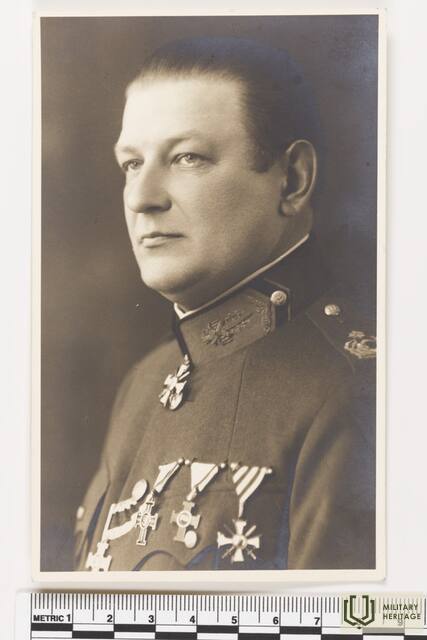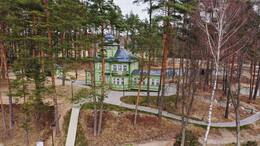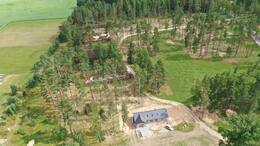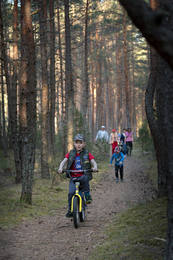Nikolajus Reekas (1890–1942)
I Nepriklausomybės karai, II Antrasis pasaulinis karas
Estijos generolas, politikas ir vienas iškiliausių Nepriklausomybės karo vadų. Laisvės kryžiaus 1-ojo laipsnio 2-ojo laipsnio, 2-ojo laipsnio 2-ojo laipsnio ir 2-ojo laipsnio 3-iojo laipsnio kavalierius.
Nikolajus Reekas gimė Nikolajaus Bazykovo vardu 1890 m. vasario 1 d. Taline, bet užaugo Aleksejaus Reeko šeimoje Saremos saloje. Jis baigė Čiuhuivo karo akademiją 1910 m., oro stebėtojų kursus Kijeve 1916 m. ir Imperatoriškąją Nikolajaus karo akademiją Sankt Peterburge 1917 m. Jis buvo pirmasis Estijos karininkas, 1923–1925 m. studijavęs Prancūzijos aukščiausiojoje karo mokykloje (École supérieure de guerre).
Prasidėjus Pirmajam pasauliniam karui 1914 m., jis buvo paskirtas 90-ojo Onegos pulko kuopos vadu, o karo pabaigoje pakilo iki Petro Didžiojo jūrų tvirtovės Muhu (Munsundo) įtvirtinimo štabo viršininko pareigų. Reekas paliko Rusijos imperatoriškąją armiją kaip Generalinio štabo kapitonas.
Prasidėjus Nepriklausomybės karui, Reekas buvo paskirtas Gynybos lygos regiono vadu Viru apskrityje ir Narvoje, o netrukus tapo 5-ojo pėstininkų pulko vadu, vėliau 1-osios divizijos, 3-iosios divizijos vadu ir galiausiai Viru fronto štabo viršininku. 1918 m. Reekas buvo paaukštintas į Estijos ginkluotųjų pajėgų Generalinio štabo pulkininko leitenanto laipsnį, o 1919 m. – į Generalinio štabo pulkininko laipsnį. 1926 m. jam buvo suteiktas generolo majoro laipsnis, o 1938 m. – generolo leitenanto laipsnis.
1925–1926 m. ir 1934–1939 m. Reekas buvo Estijos ginkluotųjų pajėgų štabo viršininkas, 1927–1928 m. ėjo gynybos ministro, o 1939–1940 m. – karo ministro pareigas Jüri Uluotso kabinete iki sovietų okupacijos. Ketvirtojo dešimtmečio pradžioje jis buvo 2-osios divizijos vadas, taip pat vadovavo Aukštajai karo akademijai ir Estijos nacionaliniam gynybos koledžui.
Nikolajus Reekas buvo vedęs Marie Clarą Johanson, jie turėjo dvi dukteris. Jų dukra Larisa mirė 1921 m. Antroji dukra Tiiu buvo deportuota kartu su motina 1941 m. birželį. Abi mirė Andrejevkoje, Čainsko rajone, Tomsko srityje. Nikolajus Reekas buvo suimtas savo namuose 1941 m. kovo mėn. ir išsiųstas į Usollago koncentracijos stovyklą Solikamske, Rusijoje. NKVD karinio tribunolo jam buvo skirta mirties bausmė, o mirties bausmė įvykdyta 1942 m. gegužės 8 d.
Susijusios vietos
Verskos lankytojų centras ir Šiaurės stovykla
Restauruoti generolo Nikolajaus Reeko Art Nouveau stiliaus vasarnamiai įsikūrę Verskoje, ant Õrsavo ežero kranto, vaizdingos gamtos apsuptyje.
2020 m. čia atidarytas Verskos lankytojų centras, kuriame pristatomas unikalus regiono paveldas. Parodoje apžvelgiama Petserio šiaurinė stovykla, įkurta čia 1920 m., Nepriklausomybės karo įvykiai ir gydomojo purvo bei mineralinio vandens naudojimas vietos kurortuose.
Šiaurinė stovykla
Šiaurinė stovykla yra įsikūrusi Orsavos ežero pakrantėje į pietus nuo Verskos, Veru apskrityje.
Oficialiai Estijos gynybos pajėgų Petserio šiaurinė stovykla (2-osios divizijos štabo štabas) buvo įkurta XX a. 3-ojo dešimtmečio viduryje kaip vasaros kavalerijos ir artilerijos mokymo centras. Kompleksą sudarė kareivinės, arklidės, karininkų gyvenamosios patalpos, valgykla ir įspūdinga valgykla. Stovykloje taip pat buvo sporto aikštelės ir kortai bei maudymosi įrenginiai prie ežero. Buvo atskiros maudymosi zonos karininkams, kareiviams ir arkliams. Stovyklos viduryje buvo susirinkimų ir paradų aikštės. Artilerijos stovykla buvo kitoje ežero pusėje, įskaitant lentpjūvę.
Dauguma pastatų nuo to laiko buvo sunaikinti, tačiau kareivinės ir kai kurios gyvenamosios patalpos išliko. Vietovę galima apžiūrėti iš išorės.
Paprašius, Verskos ūkio muziejus gali pasiūlyti teminę programą, skirtą Šiaurinei stovyklai.
Laskevälja dviračių takas
Šis dviračių takas driekiasi per Veru apskritį, per miškingas kaimus, per pelkes, aplink ežerus ir pro smėlėtas Mustojos platybes.
43 km ilgio takas primena vietos karinę istoriją, einant per Estijos gynybos pajėgų 1920–1930 m. naudotą šaudyklą. 17 km ilgio atkarpa nuo Verskos iki Pietinės stovyklos yra gana lygi, tačiau kelias atgal ilgesnis (26 km) ir duobėtesnis. Pradžios taškas yra Valstybinio miškų valdymo centro Verskos laužavietėje, kur rasite išsamų tako žemėlapį.
Susijusi istorija
Cėsių mūšio pradžia, eiga ir pabaiga
Pergalė Cėsių mūšyje turėjo tapti lūžio tašku Latvijos ir Estijos kovoje už savo šalies nepriklausomybę. Ši pergalė sustabdė Andrijevo Niedros vyriausybės ir vokiečių generolo Rüdigerio fon der Golco planus užkariauti Pabaltijį. Vietoj to, Liepojoje savo veiklą atnaujino Karlio Ulmanio vadovaujama Laikinoji Latvijos vyriausybė.









